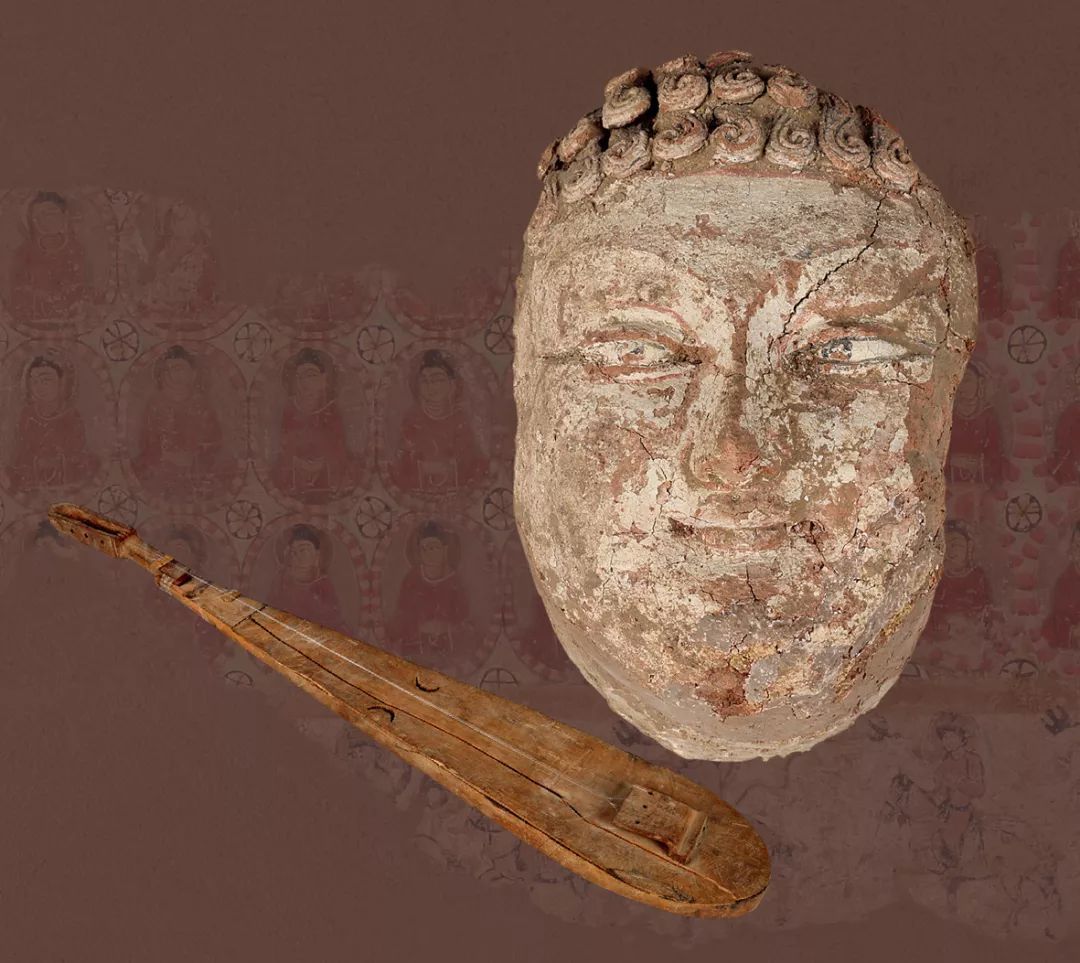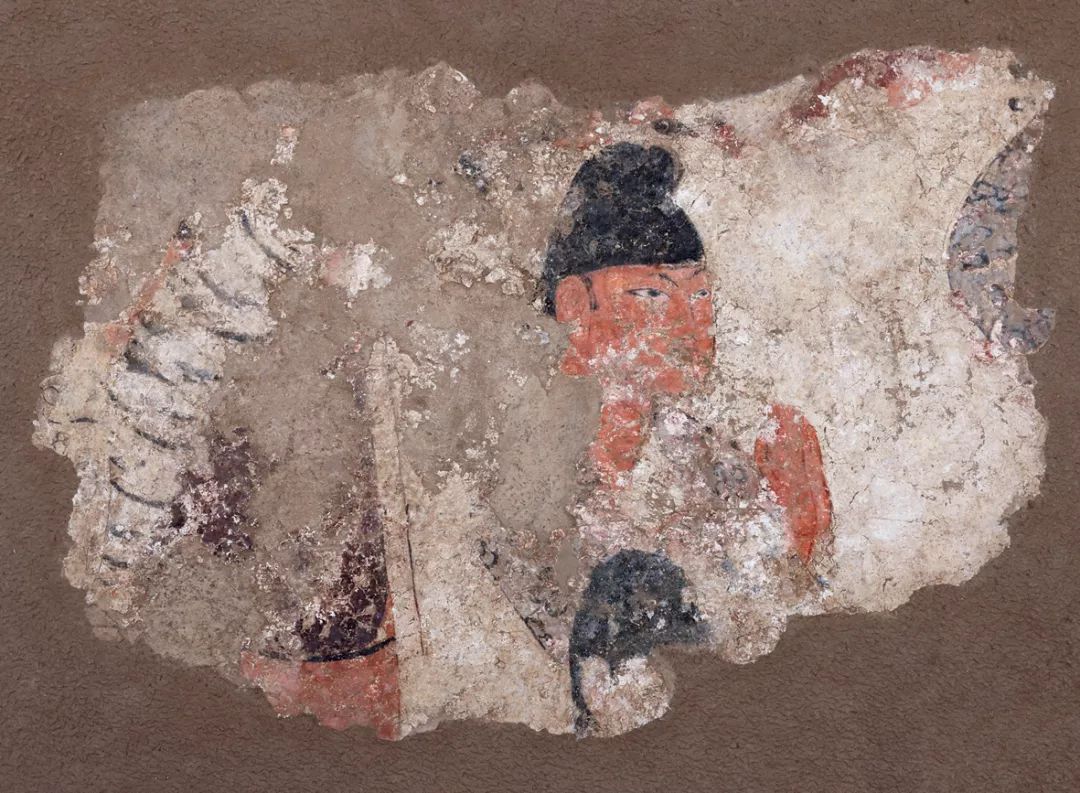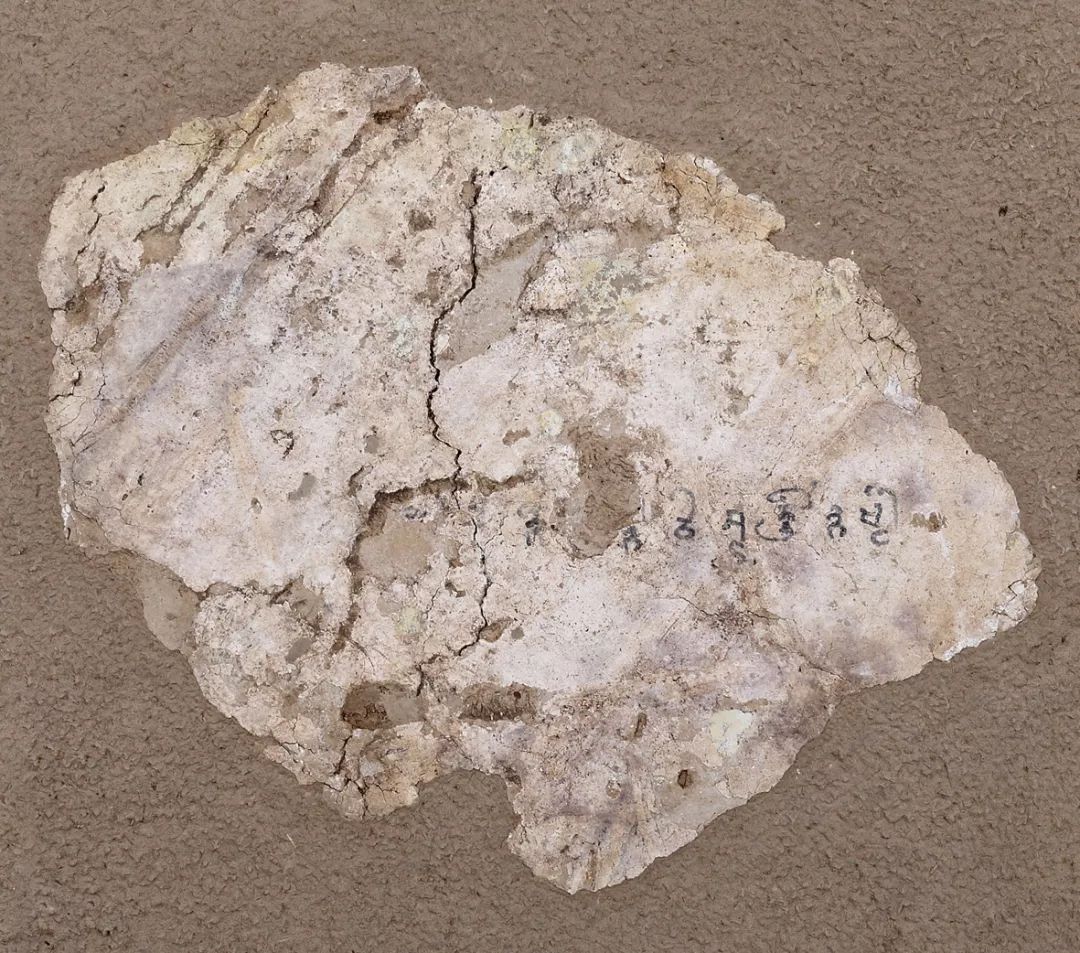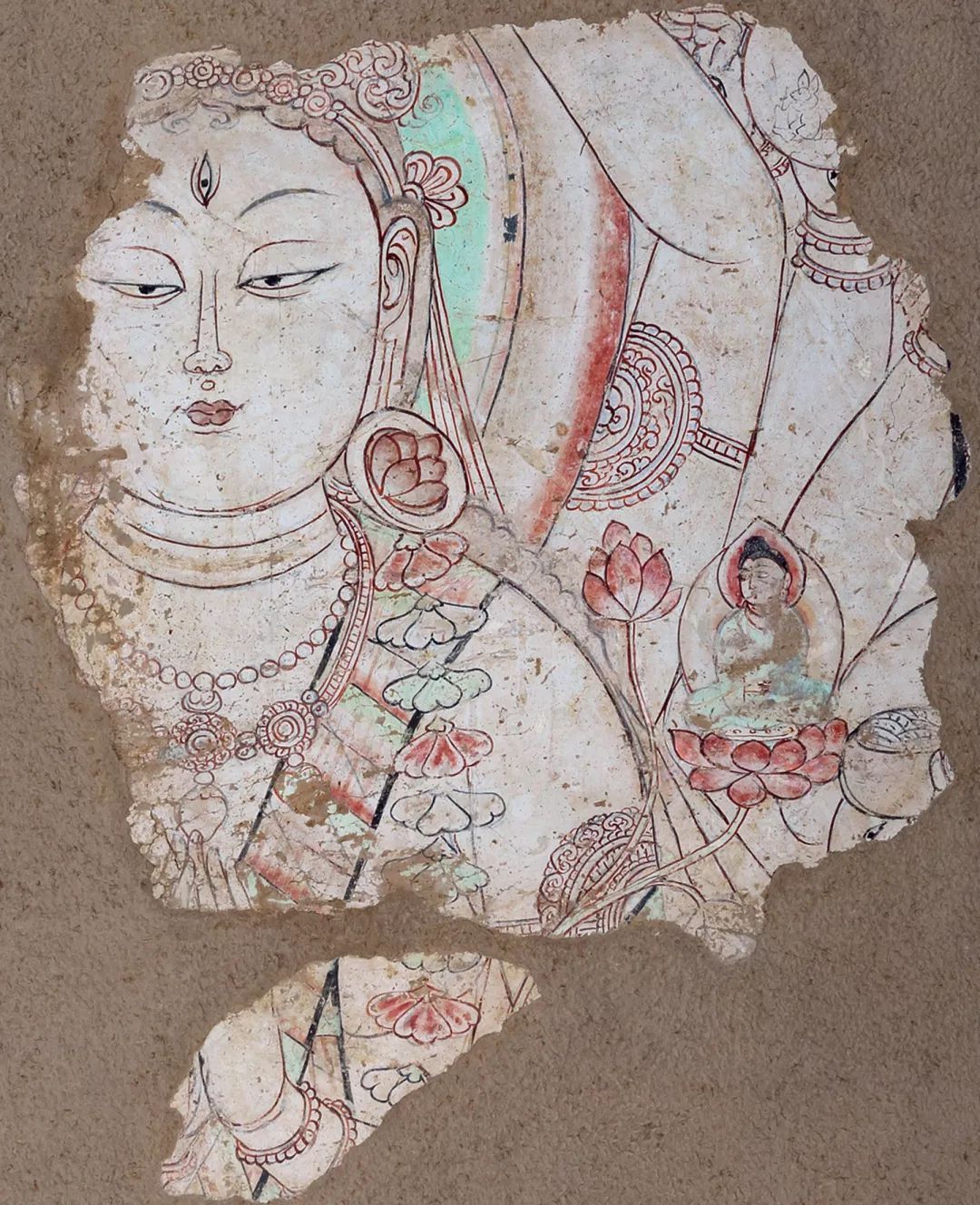DepthReading
Reviving the Glorious Past: The Discovery and Research of Ancient Khotan Buddhism Art
Investigation and
Excavation
Hetian Prefecture of the Xinjiang Uygur
Autonomous Region is located at the southern edge of the Taklamakan Desert. Its
fertile land has entered the horizon of the Han Chinese ever since the reign of
the Emperor Wu of the Han Dynasty after Zhang Qian opened trade routes to the
Western Regions. The area was once named Khotan, while the prominent monk of
the Tang Dynasty, Xuan Zang, called it Kustana (Ch.: Qu-sa-dan-na). Being one
of the most prosperous hubs on the southern branch of the Silk Route since the
Han Dynasty, Khotan is dotted with various historic sites yet buried deep into
the sands.
The investigation and research of cultural relics and images from Khotan was tightly intertwined with the late nineteenth century expeditions and accompaning looting conducted by foreign explorers. In 1893, a French mission led by Dutreuil de Rhins and F· Grenard into the Western Regions went by Khotan. Their acquisition of a number of potteries and figurines there was later showed in an exhibition held in Europe, and aroused an enthusiastic public attention to the land.
Khotan soon became a hub for explorers from
around the world along with the rise of interest in investigating the Western
Regions. In 1896, the Sweden explorer Sven Hedin has ventured further into the
interior of the desert, and during his second expedition found the renowned sites
of Dandan Oilik and Karadong. As the pioneer of western explores in
investigating and excavating sites in Khotan, Sven Hedin’s record of location
and hydrology of the two sites became classical guides to later explorers and
archaeologists.
Among those explorers crowd in Khotan following the steps of Sven Hedin, the most important figure is Marc Aurel Stein from Britain. From 1900 to 1930, Stein has led four expeditions in Xinjiang and the Hoxi Corridor and looted away large numbers of uncovered objects. His notes of experience and excavation was later compiled and published as books.
“The Ancient Hotan,” one of the four publications, “has elaborately recorded the whole journey of Stein’s expedition in the Taklamakan Desert, with a great total one million words in length and over three-hundred photographs and maps.” During his investigation at Khotan, Stein has conducted systematic excavations of a number of sites near Damago, including the remains of the Rawak monastery, Dandan Oilik, Siyelik and Balawaste. Photographs of some of his excavations and plan drawings of the sites that are included in the archaeological report have provided a rich amount of first hand sources. Nevertheless, Stein was notorious for his looting activities that are indicated by his destroy of sites and taking away of uncovered objects.
The Third German
Turfan Expedition (1905 to 1907) led by Albert von Le Coq once stopped by
Khotan. Uncovered objects from the region were sent to the Ethnological Museum
of Berlin soon after. From 1927 to 1935, the joint Sino-Swedish Expedition in
north and northwest China has conducted geological, historical and archaeological
research in Inner Mongolia, Gansu, and Xinjiang under the lead of Xu Bingchang
and Sven Hedin and achieved significant accomplishments. All of its team
members were leading figures in their respective research fields, such as the
Chinese archaeologist Huang Wenbi and Sweden archaeologist Folke Bergmann. The
expedition has been successful in taking investigations and preliminary
excavations of many sites. In 1929, the team arrived at Khotan and surveyed
sites in the desert according to the region’s fluviology and hydrology. Huang
Wenbi has accounted elaborately in his book, Archaeology of the Tarim Basin, of sites located in the desert to
the north of Khotan, ancients sites near Damogo, and the Keriya River and Karadong.
His book also includes archaeological reports of the monastic sites of Melikawat and Karadong, with illustrations attached.
Except for above-mentioned famous explorers and investigative teams, a great many of western explorers and treasure-seekers spotted Khotan as a main hub for exploration, and subsequently took place investigations and acquisitions. The renowned includes the American dealer O· T· Crosby and E· Huntington in 1903, the Finnish C· G· E· Mannerheim in 1907, the Russian S· F· Oldenburg from 1914 to 1915, the German W· Trinkler and H de Terra in 1928, and W· Filchner from 1934 to 1938. Objects acquired by these international explorers have been latter scattered in museums located in London, Bremen, New York, and St. Petersburg.
Research and Preservation
Since the establishment of the People’s Republic of China, the National Cultural Heritage Administration, the Xinjiang Autonomous Region Institution of Cultural Heritage and the Hetian Municipal Museum have organized a series of archaeology surveys and rescuing excavations at several sites. An important one is the 1979 excavation of the Han Dynasty site at Melikawat in Lop County, which uncovered a number of early Buddhist objects including miniature Buddhist images, seated Buddha statues (damaged) and stucco fragments of mural paintings. Since 1988, the joint Sino-Japan Expeditin has carried out a nine-year long scientific excavation at Niya in Minfeng County. Experts from both the two countries have cleaned out remains of residential area and Buddhist monasteries, and thus uncovered a large amount of objects and manuscripts, including even silk-made works, such as the renowned piece of brocade embroidered with the text “Wuxing chu dongfang li zhongguo” (Five stars rise in the east, benefiting the Central Kingdom). This investigation led to the publication of a two-volume book titled “Niya site: Research Report into an Ancient Town in Xinjiang, China.” In 1993, the Xinjiang Institute of Archaeology in collaboration with the French 315 Research Institute has conducted a three-year investigation of the sites of Karadong and Yuansha that are located by the Keriya River. They have uncovered a Buddhist stūpa and two Buddhist monasteries at Karadong, and a complex of pre-Han burials that is located deep in the Taklamakan Desert near the Keriya River’s downstream. The monastery dated to the third or fourth century CE has preserved several pieces of stucco mural fragments that are painted with Buddha images in the seated or the feet-crossing posture.
Combing through the post-1949 archaeological
excavations at the important sites in Khotan, one sees how the systematized and
protective excavation policy, under the guidance of the aim to protect historical
sites and relics, is intrinsically distinctive from the looting activities
taken by western explorers. At the same time, the integration of foreign teams
in joint expeditions not only nurtures the archaeological and research capacity,
but also accelarates the internationalization of the field of Khotan studies.
Amidst
the recollection and systematic arrangement of archaeological sites, the Hetian
Prefecture established a municipal bureau of cultural heritage in 1979 to
perform the function of acquiring and preserving cultural relics. With support
from the administration of the Xinjiang Uygur Autonomous Region and the local
government of the Hetian Prefecture since 1995, the Hetian Municipal Museum was
officially launched in 2005 and soon became the essential institute for the
preservation and research of local cultural relics.
Nevertheless, private diggings and smugglings still happen nowadays in Hetian despite of the prosperity of the local archaeology and preservation. The region is facing a particular difficulty due to the shortage in funding and personnel. During the preparation for a new season of excavation at a sites near Damago in 2010, organized criminal groups presumptuously dug and smuggled in nearby deserts, their uncovered murals were later sold out in remarkably low price. With the help of local police in 2001, over 3,000 pieces of stolen objects were brought back, however, more murals were heartbrokenly destroyed during the illegal digging and resale process. In addition to the research of Khotan arts, more efforts are needed in its protection.
Tang Dynasty Buddhist Remains in Hetian
Surviving sites show that most sites in Hetian are located along the major rivers and ancient trade routes. Uncovered manuscripts and archaeological analysis of unearthed sites have dated several Buddhist remains to the Tang Dynasty. The first one is the site of Dandan Oilik in the Damago region. After the Sweden explorer Sven Hedin discovered the site, he conducted preliminary excavation and did hand drawings of the thousand-Buddha murals in its Buddhist monasteries. Stein’s arrival in 1900 led to the first systematical excavation of remains in the ancient site, including eight Buddhist monasteries. Large amount of Buddhist statuary and manuscripts were brought to Britain. Over the course of the 2002 Chinese and Japanese Joint Expedition at Dandan Oilik, archaeologists and scholars conducted new systematically excavation at sites that Stein has uncovered, yielding more painted mural in monasteries.
Local religious paintings belong to two main categories:
murals and painted wooden panels. Murals usually depict the thousand-Buddha
motif, standing Buddhas, multi-faced and multi-armed deities, horsemen or
donors. Painted wooden panels are rendered in either the horizontal or the
vertical format. The horizontal format prefers narrative stories, such as the
“Canzhong dongchuan” (The eastwards transmission of the silkworm eggs) and the
“Shuwang chuanshuo” (The legend of the Mice King) from Dandan Oilik. Meanwhile,
the Kadalik site of the Damago region, the initial systematic digging of where
was taken place by Stein, indicates a date of occupation close to that of
Dandan Oilik, according to the discovery of coins of the Tang Dynasty at the
site. Other discoveries from the site include murals, clay statues, manuscripts
written in Sanskrit and Tubo, as well as fragments of color-painted wooden
panels. Themes of these paintings include the thousand-Buddha motif, seated
donors located on the lower part of the enclosure wall, and the Buddha
Vairocana. The first comprehensive research of Khotanese paintings is conducted
by the British scholar Mrs. Joanna Williams, who has provided identification of
over 20 paintings in her doctoral dissertation “The Iconography of Khotanese
Painting.”
At the site of Toplukdong, a Damago site
discovered by a local shepherd in 2000, there are in total three Buddhist
monasteries excavated by 2011. The monasteries No. 2 and No. 3 are dated to
Tang, with mural paintings depicting preaching scenes, the thousand-Buddha
theme, multi-armed deities, and horsemen. The Monastery No.3 also houses
paintings of donors dressed in the Tang or Tubo-style. A number of painted
wooden panels feature Buddhas of multi-eyes and deities dressed in white robe.
In the Feburary of 1901,
Stein along with a retinue of hired labourers has conducted consecutive
excavations for five days at all of the major architectural remains in the
ancient city of Endere by the Andir River. Within the central monastery of the
city, they found a large number of manuscripts written in Brahmi, Chinese or
Tubo, and fragments of statues and mural painting. The most significant
discovery is an inscription, which talks about a Tang official, found on the
northwestern corner of the monastery’s inner hall. The inscription reads, “On
the seventh year of …not until Jian has heard that his troop has reached the
four great garrisons. Tubo…with the Tubo official of the Taichang rank
(chamberiain for cermonials) Qin Jiaxing returned to the original path…” The
inscription was attributed to the seventh year of the Zhenguan era (791 CE),
heretofore yielding the date of the Tubo occupation of Khotan. All of the
excavated cultural relics are now preserved in the British Museum and the
Hetian Museum. In 1989, the Hetian Institute of Cultural Heritage has restored
three Buddhist monasteries and a complex of burials of Kumlabat in the Karakax
County, with some fragmented murals discovered. The majority of objects
uncovered from the area was acquired from locals, stucco Buddhist statues and
decorative pieces of which usually have traces of pigments. Major themes of
murals include the thousand-Buddha motif, the Buddha Maitreya, animals and
donors. Most of them are preserved at the Hetian Museum.
Based on current remains discovered in sites
of Tang Buddhist monasteries in Khotan, there are two major types of paintings,
namely murals and painted wooden panels. The common theme is Buddhist icons.
Despite of these images’ fragmentary, surviving pieces reveal that murals are
usually incompatible with the overall layout of monasteries. For instance, the
thousand-Buddha motif is usually found on ceilings or enclosure walls.
Typically on an enclosure wall, the major icon of the Buddha is rendered above
donor images. The most representative themes include the Buddha Vairocana, the
guardian king Vaishravana, horsemen, earth deities, donors, some multi-armed
deities that are probably esoteric or Zoroastrian, and preaching scenes
rendered in a relatively large scale.
Along with the deepening of archaeological
investigations in Hetian and the publication of notes and materials of western
explorers, the Buddhist Kingdom of Khotan on the southern branch of the ancient
Silk Roads is reviving its lost glorious past, allowing a broader group of
audience and more scholars to learn about the glamour of the pre-thirteenth
century Buddhist art in the Western Regions through the observation of
surviving statues and murals of splendid craftsmanship.
Category: English
DepthReading
Key words:













